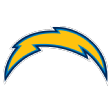The NFL free-agent market has been open for a solid few hours, and that means it's time to start declaring who did well and who didn't. The following takes are ironclad, indisputable and not subject to debate -- until, of course, we re-evaluate them next year.
Most creative move
ESPN's Bill Barnwell took a quick but deep dive into the highly unusual trade that sent Houston Texans quarterback Brock Osweiler and two draft picks to the Cleveland Browns in exchange for a fourth-round draft pick. For the purposes of this post, however, let's acknowledge the big picture: It was a good deal for both teams, even if we don't know the Browns' final outcome yet.
The Texans rid themselves of a player who will go down as one of the biggest mistakes in the history of NFL free agency, all while freeing up salary-cap space and adding to their cash budget. Yes, they had to cough up draft picks to do it, but that is probably a better outcome than keeping him in their locker room.
And the Browns, of course, added another second-round pick to their collection in exchange for the easy absorption of Osweiler's $16 million in cap space. If they are able to trade Osweiler again, they can reduce that hit. But after rolling over $50 million from 2016, and entering free agency with more than $100 million in total space, it won't matter if they have to carry his full number. In essence, it appears the Browns have found a way to use surplus cap space to acquire a draft choice.
Most confusing move
See above. Rarely do we see NFL front offices attempt a move this out of the box. We'll be poring over this one for days and weeks to come.
Best value
I don't have a single objection to the pending marriage between quarterback Mike Glennon and the Chicago Bears. The true commitment is relatively moderate, and the upside for both sides is high.
Ultimately, this deal requires the Bears to pay Glennon like an established NFL starter for one season. He is guaranteed $18.5 million, according to ESPN's Adam Schefter. (At the moment, 12 other NFL quarterbacks have contracts that average at least $19 million annually.)
It's true that Glennon hasn't played (or succeeded) enough to be considered "established," but I can echo what others have said: There are tons of people in league circles who believe he is a starting-caliber talent. The Bears won't be any less competitive with him than they were with Jay Cutler, and at 27, Glennon hasn't hit his ceiling yet. We don't know how good he can be.
If he is as feared, a backup who got overpaid by a desperate team that tried to get cute, then it was a one-year mistake for a franchise that has plenty of work to do in other areas. There is nothing about this signing that precludes the Bears from drafting a longer-term answer. They entered free agency among the NFL leaders in salary-cap room, and who other than the McCaskey family cares if they spent their cash wisely?
As for Glennon, there weren't many teams who were willing to hand him the keys even for one season. He'll get a legitimate chance to show he can be an NFL starter, and the Bears will get a relatively expensive one-year rental that could grow into something more.
Jaguars gonna Jaguar
As we noted earlier this week, the Jacksonville Jaguars wrote 28 contracts worth an NFL-high $488 million during the past three free-agent markets. With only 11 wins to show for it, and having already jettisoned a majority of the players they signed over that period, they were the classic example of a team focused more on paper improvement than actual team-building.

But even with a new football czar (Tom Coughlin) and coach (Doug Marrone), the Jaguars were back to their old tricks Thursday. They guaranteed defensive end Calais Campbell, who turns 31 in September, $30 million and then won the bidding war for cornerback A.J. Bouye with a bid of $26 million fully guaranteed.
Some of Campbell's money might be guaranteed for injury only, and there is no doubt that in a vacuum, both he and Bouye are nice players. But history tells us this is no way to build a contender. There are reasons why the Arizona Cardinals didn't bring Campbell back, and why the Texans didn't hold on to Bouye. Those reasons will be evident in the coming year(s). Wake me up when the Jaguars start spending big money on retaining their own draft choices, and not on someone else's discards.
Speed pays
Two aging receivers were snapped up quickly Thursday. Why? Straight-up speed, or at least the perception of it.
DeSean Jackson, 30, agreed to terms on a three-year contract that included $20 million in guarantees from the Tampa Bay Buccaneers. And Ted Ginn Jr., who turns 32 in April, will sign with the New Orleans Saints.
In Jackson's case, NFL Next Gen statistics suggest he was still one of the league's fastest players last season. Based on information gleaned from data chips in shoulder pads, Jackson ranked in the top 10 of players in terms of gaining separation from defenders on deep pass routes.
Ginn, meanwhile, isn't as fast as he once was but continues to attract suitors and will push his career earnings near $30 million despite never catching more than 56 passes for more than 790 yards in a season.
He will push his career into an 11th season despite both his middling production and unreliable hands. Over the past four seasons, he has dropped 18 passes in 280 targets. That drop percentage of 6.4 is the fifth highest in the NFL over that span among qualified receivers.
But his still-present speed makes him a genuine big-play threat, and he has caught enough of those deep passes to scare opposing defenses. His average of 15.1 yards per reception since 2013 ranks No. 15 in the NFL.
According to a recent ESPN Stats & Information analysis, NFL receivers reach their statistical peak at age 27. But their production doesn't begin to fall off significantly until, on average, age 31. Speed preservation can delay that decline.
Best foresight

Left tackle Russell Okung absorbed heavy criticism last year for firing his agent and accepting a team-friendly contract from the Denver Broncos that turned out to be a one-year, $8 million deal. It's doubtful that Okung anticipated massive demand at his position in 2017, but it all worked out for him in the end.
As a bidding war erupted around him, Okung accepted what has been reported as a four-year contract with $25 million fully guaranteed from the Los Angeles Chargers. That means he will have earned $33 million in two years and, if he plays out his entire deal with the Chargers, $61 million over five. All's well that ends well.
Favorite signing
Defensive back Micah Hyde caught my eye during a Green Bay Packers minicamp in 2013 and to me, he has been one of the NFL's most valuable and versatile players since then. Hyde said in a statement that the Packers never made him an offer, a surprising revelation for a team that almost always locks up its best players, but their loss is the Buffalo Bills' gain.
As a part-time player for the Packers, Hyde had eight interceptions, four sacks, six fumble recoveries and three punt returns for touchdowns. He can play cornerback or safety, functions well in blitz packages and has a clear nose for the ball. The Bills will expect him to be a full-time player, based on a five-year contract that includes $14 million in guarantees, but there is every reason to think Hyde can handle it.
I usually hate when coaches describe someone as "just a good football player," but that really is what Hyde is. He is the kind of "glue player" that every team needs. I can't argue with the Packers' decision to prioritize a pass-rusher (linebacker Nick Perry) over a defensive back, but Hyde leaves a multifaceted role that will be difficult for one player to fill.
Crumbling before our eyes

I'm all for allowing aging players to move on, assuming that younger replacements are on hand. But it's difficult to understand the Cincinnati Bengals' strategy over the past two offseasons, during which time they've disassembled a good portion of the offense that helped them make the playoffs for five consecutive seasons from 2011 to 2015.
Last year, they bid farewell to receivers Marvin Jones and Mohamed Sanu along with right tackle Andre Smith, and then saw their offense drop from No. 4 in scoring to No. 21 in 2016. Thursday, they lost two members of their starting offensive line: tackle Andrew Whitworth and guard Kevin Zeitler. Whitworth is 35, but he is still a really good player, and the Bengals badly misjudged his value on the market. And if you think Cedric Ogbuehi is a reliable replacement, you're fooling yourself.
Barring a draft full of hits, the Bengals are going in the wrong direction from a personnel perspective.
Time to panic

No team entered the offseason needing more help at offensive line than the Minnesota Vikings, who at most have two returning starters from 2016. Unfortunately for them, the demand for quality linemen far outweighed the supply. And double unfortunately: The Vikings declined to get caught up in the bidding wars that erupted for those who were available.
In the end, the Vikings had signed only one potential starter, Riley Reiff. He could be a serviceable right tackle, or a desperation left tackle, but it's worth noting that the Detroit Lions -- after five seasons with him -- decided to replace him with free agent Rick Wagner. Realistically, the Vikings still need a left tackle, one starting guard and perhaps a center as well. That puts a lot of pressure on their draft, especially when you consider they don't have a first-round draft choice.
Most efficient weaponization
Lost in Thursday's drama was the Philadelphia Eagles' quick and effective upgrade of their receiver position, one they accomplished without mortgaging their future.
We all know the Eagles had one of the NFL's least productive group of receivers in 2017, ranking No. 31 in receiving yards (1,849) and yards per catch (10.7). They also had the NFL's highest drop percentage (5.8). To give quarterback Carson Wentz immediate help, they signed free agents Alshon Jeffery and Torrey Smith to relatively reasonable deals.
Jeffery, who when healthy can be a legitimate No. 1 receiver, will receive $14 million for one season. He'll enter the season knowing that 2017 will be the best chance in his career for a major payday.
Smith, meanwhile, got a three-year deal worth up to $15 million.
Both players were available for a reason. Jeffery played in only 65 percent of the Bears' plays during the past two seasons because of injuries and suspensions. Smith's yardage totals have decreased in each of the past three seasons, from 1,128 in 2013 to 267 last season for the 49ers. But they'll do their part to give Wentz a set of professional receivers.
Funniest assertion

The San Francisco 49ers' decision to sign quarterback Brian Hoyer should not, under any circumstances, be viewed an obstacle to pursuing Washington Redskins quarterback Kirk Cousins.
Cousins is caught in the Redskins' current drama and already has asked owner Dan Snyder to trade him. Niners coach Kyle Shanahan would love to have him. Hoyer? He's the guy you don't want starting more than a handful of games. History tells us that he either runs out of gas, or defenses catch up to him, or both, over the course of a season.
In his career, according to ESPN Stats & Information, Hoyer has a 60.4 Total QBR in the first two months of a season. In the final two months, his QBR is 37.3. He is a high-end backup quarterback, which means he can handle himself respectably in limited playing time. No one in the NFL thinks the 49ers are content to enter the season with him as their unquestioned starter.
































